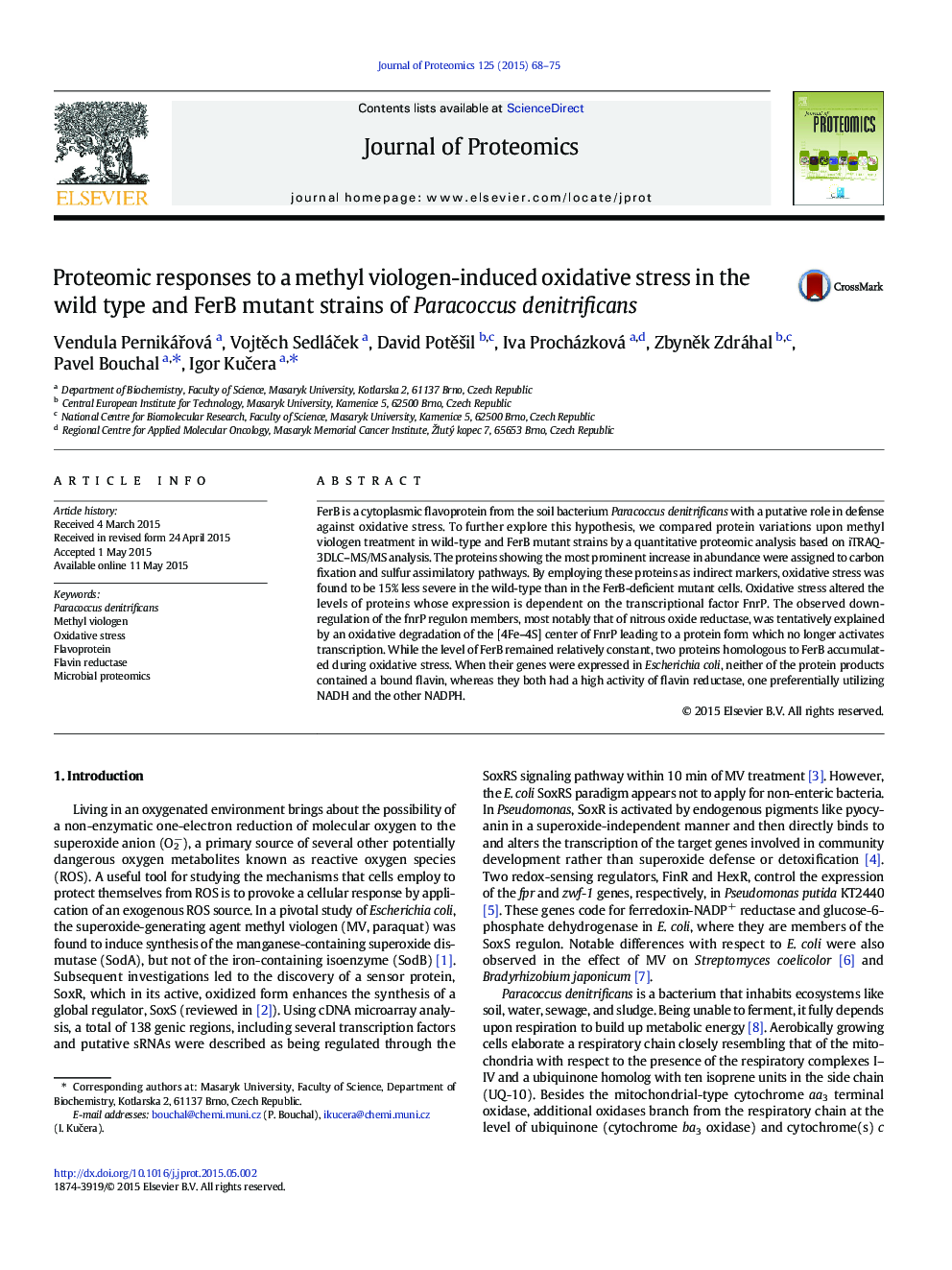| Article ID | Journal | Published Year | Pages | File Type |
|---|---|---|---|---|
| 1225548 | Journal of Proteomics | 2015 | 8 Pages |
•52.3% coverage of Paracoccus denitrificans putative proteome using iTRAQ-3DLC–MS/MS•149 proteins were upregulated and 105 downregulated after methylviologen treatment.•FerB plays the role in P. denitrificans cells during oxidative stress.•Interference of methyl viologen with FnrP transcription factor was identified.
FerB is a cytoplasmic flavoprotein from the soil bacterium Paracoccus denitrificans with a putative role in defense against oxidative stress. To further explore this hypothesis, we compared protein variations upon methyl viologen treatment in wild-type and FerB mutant strains by a quantitative proteomic analysis based on iTRAQ-3DLC–MS/MS analysis. The proteins showing the most prominent increase in abundance were assigned to carbon fixation and sulfur assimilatory pathways. By employing these proteins as indirect markers, oxidative stress was found to be 15% less severe in the wild-type than in the FerB-deficient mutant cells. Oxidative stress altered the levels of proteins whose expression is dependent on the transcriptional factor FnrP. The observed down-regulation of the fnrP regulon members, most notably that of nitrous oxide reductase, was tentatively explained by an oxidative degradation of the [4Fe–4S] center of FnrP leading to a protein form which no longer activates transcription. While the level of FerB remained relatively constant, two proteins homologous to FerB accumulated during oxidative stress. When their genes were expressed in Escherichia coli, neither of the protein products contained a bound flavin, whereas they both had a high activity of flavin reductase, one preferentially utilizing NADH and the other NADPH.
Graphical abstractFigure optionsDownload full-size imageDownload high-quality image (128 K)Download as PowerPoint slide
